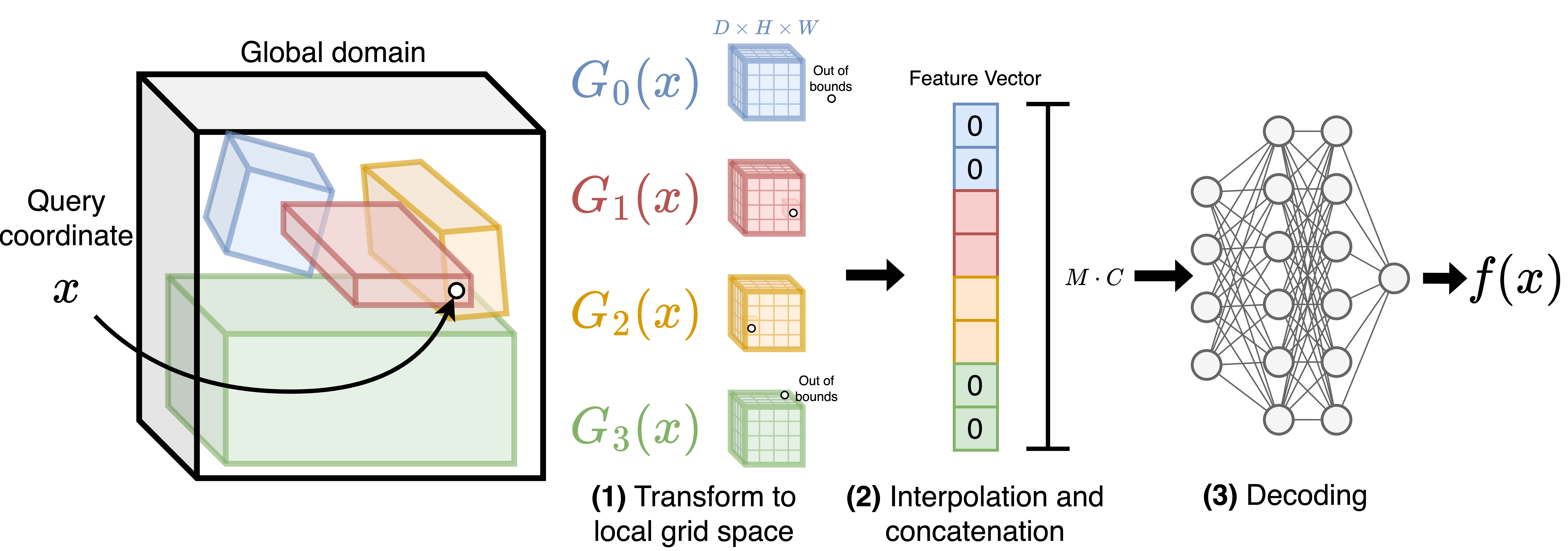Adaptively Placed Multi-Grid Scene Representation Network
Flexible feature grids for 3D scene representation
Scene representation networks (SRNs) like NeRF and I-NGP model a scene by learning a function that maps spatial coordinates to a color/density value at that spatial location. To create an image for a certain viewpoint, a rendering algorithm like ray-marching is used, which sends rays out from the camera through each pixel in the image plane. The rays are sampled from the starting point going outward, and the spatial positions are decoded by the neural network to a color/alpha value, which can subsequently be composited to form a final color.
The challenge with these SRNs is the speed at which they train and render. The original NeRF model achieves high quality, it takes considerable time to train and render. A single frame can take on the order of minutes to render depending on resolution and model size. I-NGP improves on both the training time and rendering speed by using a feature grid, which takes computation out of the fully connected layers of NeRF and instead allocates those parameters into a feature grid of learnable parameters that can be efficiently queried with trilinear interpolation. They do some other fancy tricks such as hash-grid encoding and multiple levels of resolution, but the efficiency comes from a fixed feature grid and a shallow decoder neural network.
While this is great for training/rendering speed, I-NGP and other grid-based models thus far are not adaptive to the features within the scene. The grid remains fixed at the extents of the spatial domain. This may be wasteful, since the complexities within the scene may not be uniformly distributed within the scene.

In this project, we add a simple mechanic to "unlock" the feature grid and allow the grid position to be learned. This lets the model efficiently use all parameters, keeping the memory/storage use low and rendering speed high.
To introduce this flexibility, we give each grid a transformation matrix with learnable parameters. This gives the grids the flexibility to rotate, scale, translate, and even shear to fit the scene better. Another change is that we use a set of multiple feature grids instead of a single grid. This helps cover content in the scene better than a single grid, and creates a natural kind of multiresolution within the model.
For more details, please read our paper!
